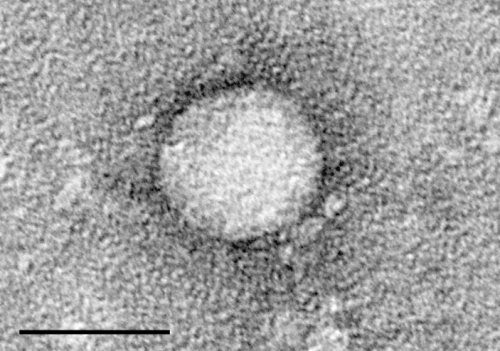Harm reduction programs may prevent hepatitis C in injection drug users

Researchers at UCSF and their colleagues have found that hepatitis C virus (HCV) infection among people who inject drugs remains high and stable in some North American cities but incidence has dropped and remained low in some Australian and European cities. These differences in HCV infection rates likely reflect differences in the level and timing of programs to increase access to sterile injecting equipment and medically assisted treatment for opioid dependence, two harm-reduction programs shown to prevent transmission of HCV.
In a new study published in the April issue of the journal Clinical infectious Diseases, researchers looked at HCV incidence in people who inject drugs in major cities in four high-income countries: Sydney and Melbourne, Australia; Amsterdam, the Netherlands; Montreal, Canada; and Baltimore and San Francisco, United States. This research is one of many important studies conducted as part of the International Collaboration of Incident HIV and HCV in Injecting Cohorts (InC3) Study.
The lead author, Meghan Morris, PhD, MPH, assistant professor of epidemiology and biostatistics at UCSF, and the team analyzed epidemiological data from eight similar cohort studies of participants who were recruited through community outreach and were HCV negative when they entered study.
More than 10 million people who inject drugs live with the hepatitis C virus, which damages the liver if left untreated. Injection drug use continues to be the most common mode of hepatitis C transmission in high- and middle-income countries.
Sharing needles is the most efficient way to transmit HCV, but other studies have demonstrated that even other paraphernalia such as tourniquets and syringes and containers and surfaces where drugs are mixed can be contaminants.
The study found that in Melbourne, Sydney and Amsterdam, HCV incidence fell dramatically between 1995 and 2011, the same time frame when harm reduction programs such as needle and syringe exchange programs and opiate substitution therapy were scaled up.
"The lower HCV incidence in Amsterdam and Melbourne, and the downward trend in Sydney, likely reflect an early and sustained implementation of harm reduction services," the authors wrote. "The Netherlands and Australia were global leaders in scaling up harm reduction programs to include making sterile needles available through pharmacies, vending machines and outreach."
HCV incidence was highest and remained elevated in Baltimore, San Francisco and Montreal. These cities where HCV was highest also experienced higher rates of syringe and equipment sharing and lower prevalence of opioid substitution therapy than Amsterdam, Melbourne, and Sydney.
"Our research indicates that early and sustained access to harm reduction programs can reduce HCV incidence," Dr. Morris said.
"A sustained commitment to fund evidence-based harm reduction programs is necessary to maintain the low incidence in Amsterdam, Sydney and Melbourne," the researchers wrote. "In San Francisco, Baltimore and Montreal, where HCV incidence remains high, an aggressive public health approach is urgently needed."
More information: Meghan D. Morris et al. Geographic Differences in Temporal Incidence Trends of Hepatitis C Virus Infection Among People Who Inject Drugs: The InC3 Collaboration, Clinical Infectious Diseases (2017). DOI: 10.1093/cid/ciw869


















